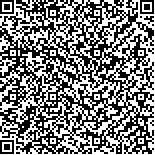努尔比亚·克其克,苗田雨,帕丽达·买买提,等.中药松弛膏联合跑台训练对废用性肌萎缩大鼠PI3K/Akt/mTOR信号通路及炎性反应的影响[J].中华物理医学与康复杂志,2022,44(5):395-401
扫码阅读全文

|
| 中药松弛膏联合跑台训练对废用性肌萎缩大鼠PI3K/Akt/mTOR信号通路及炎性反应的影响 |
|
| |
| DOI:10.3760/cma.j.issn.0254-1424.2022.05.003 |
| 中文关键词: 废用性肌萎缩 白细胞介素-10 肿瘤坏死因子-α |
| 英文关键词: Disuse muscle atrophy Treadmill training Traditional Chinese Songchi ointment interleukin-10 Tumor necrosis factor-α |
| 基金项目:国家自然科学基金项目(82060417,81660380) |
|
| 摘要点击次数: 4760 |
| 全文下载次数: 5133 |
| 中文摘要: |
| 目的 观察中药松弛膏联合跑台训练对废用性肌萎缩(DMA)大鼠腓肠肌磷脂酰肌醇激酶3(PI3K)/蛋白激酶B(Akt)/哺乳动物雷帕霉素靶蛋白(mTOR)信号通路及炎性反应的影响。 方法 将45只Wistar大鼠分为正常对照组(n=8)及造模组(n=37),选用Nagai法将造模组大鼠制成左后肢DMA模型。采用随机数字表法将32只DMA制模成功大鼠分为模型对照组(MC组)、运动干预组(EX组)、中药松弛膏组(SC组)及联合治疗组(CR组),每组8只大鼠。MC组大鼠不给予任何干预;EX组大鼠给予跑台训练(跑台速度为18 m/min),每天训练1次,每周训练6 d;SC组大鼠给予中药松弛膏局部涂抹,每天治疗1次,每周治疗6 d;CR组大鼠先给予跑台训练(同EX组),再给予中药松弛膏局部涂抹(同SC组),每天治疗1次,每周治疗6 d。于干预6周后采用HE染色法评估各组大鼠左后肢腓肠肌病理形态变化,采用酶联免疫吸附测定法(ELISA)检测各组大鼠血清肿瘤坏死因子-α(TNF-α)、白细胞介素-1β(IL-1β)、白细胞介素-10(IL-10)含量,采用实时荧光定量PCR法(qRT-PCR)及蛋白免疫印迹法(Western blot)检测各组大鼠PI3K、Akt、mTOR mRNA水平及蛋白含量。 结果 MC组肌纤维排列紊乱,有大量炎性细胞浸润,CR组肌纤维排列紊乱、炎性细胞浸润情况均显著缓解。干预后CR组炎性因子TNF-α、IL-1β含量[分别为(0.138±0.004)pg/ml和(0.272±0.020)pg/ml]均较MC组、EX组及SC组显著降低(P<0.05),抗炎因子IL-10含量[(0.240±0.014) pg/ml]均较MC组、EX组及SC组明显增加(P<0.05);另外CR组PI3K、Akt、mTOR mRNA水平及蛋白含量亦较MC组、EX组明显增加(P<0.05)。 结论 中药松弛膏联合跑台训练能协同上调DMA大鼠抗炎因子IL-10水平及PI3K/Akt/mTOR信号通路表达,下调促炎因子TNF-α、IL-1β含量,抑制肌纤维炎性反应,促进肌纤维蛋白质合成,有助于DMA病情缓解。 |
| 英文摘要: |
| Objective To observe any effect of supplementing treadmill training with applications of the traditional Chinese Songchi ointment in the rehabilitation of gastrocnemius muscles atrophied through disuse. Methods Forty-five Wistar rats were randomly divided into a normal control group (n=8) and a model group (n=37). The rats in the model group had their left hind limbs immobilized by the Nagai method to induce disused muscle atrophy (DMA). That group was then randomly subdivided into a model control (MC) group, a treadmill training group (the EX group), a Songchi ointment group (SC group) and a comprehensive rehabilitation group (the CR group), each of 8. The EX and SC groups were given treadmill training at 18m/min or topical application of Songchi ointment once a day, 6 days a week for 6 weeks. The CR group was given both treatments. After the 6 weeks, hematoxylin and eosin staining was used to evaluate the pathological changes in the gastrocnemius of each rat′s left hind limb. Serum levels of tumor necrosis factor α (TNF-α), interleukin-1β (IL-1β) and interleukin-10 (IL-10) were detected using enzyme-linked immunosorbent assays. PI3K, Akt and mTOR mRNA and protein were assayed using real-time quantitative PCR and western blotting. Results The arrangement of muscle fibers in the MC group was disordered and there was a large number of infiltrated inflammatory cells. Such conditions were significantly relieved in the CR group. After the intervention the levels of inflammatory factors TNF-α and IL-1β in the CR group were, on average, significantly lower than those observed in the MC group, the EX group or the SC group, while the level of anti-inflammatory factor IL-10 was significantly higher. The average PI3K, Akt and mTOR mRNA and protein levels of group CR were significantly higher than those of the MC and EX groups. Conclusions The traditional Chinese Songchi ointment can usefully supplement treadmill training to relieve DMA. It upregulates IL-10, activates the PI3K Akt/mTOR signaling pathway and promotes the synthesis of muscle fiber protein while down-regulating TNF-α and IL-1β and muscle fiber inflammatory response. |
|
查看全文
查看/发表评论 下载PDF阅读器 |
| 关闭 |